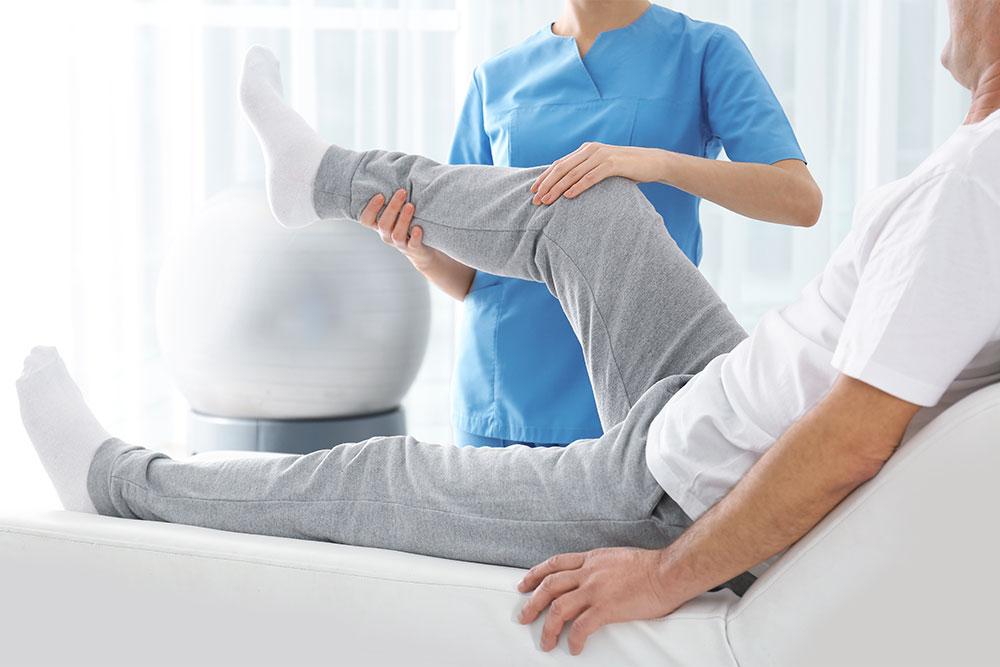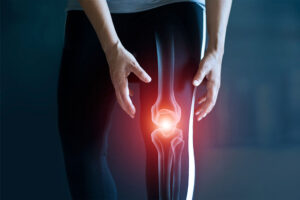The knee joint is one of the hardest working joints in the body, which means, unfortunately, knee pain is far too common. It can derail even the simplest daily activities in life.
The knee is a simple hinge joint that only allows flexion and extension. The complex structure is made up of bones, cartilage, tendons, and ligaments that are prone to tears, fractures, sprains, and degeneration.
If you are looking for relief from knee pain, physiotherapy can be one of the fastest and safest ways to getting your strength back and helping you on your way to recovery.
Physiotherapists in Ontario
Physiotherapy goes by many names, including physical therapy and rehabilitation (rehab.) It is designed to ease muscle and joint pain.
When beginning physiotherapy, you will work with a physical therapist on your knee injury.
A physiotherapist is a licensed health care professional that specializes in non-invasive and non-surgical orthopedic and musculoskeletal injuries. They help you get back to optimal health by assessing the knee injury and prescribing a treatment plan.
To practice in Ontario, a physiotherapist must complete a four-year program and a Master’s degree in physiotherapy. After completing their education, they complete all board exams to attain licensing and then registers with the College of Physiotherapists of Ontario.
What your physiotherapist may include in your personal plan:
- Stretches and exercises
- Manual muscle release
- Joint mobilizations
- Laser therapy
Physiotherapy to help your knee
Physiotherapy for the knee involves evaluating and assessing the affected leg, from your hip to your foot. Your physical therapist will assess you and prescribe a knee pain treatment to help decrease pain and improve mobility.
Types of knee pain
Knee pain can be described in different stages:
- Acute: Most severe pain. Occurs 1-7 days after injury. Use R.I.C.E. (rest, ice, compression, elevation) before beginning regular activity.
- Sub-acute: 2-6 weeks after injury. Mild but noticeable pain. Start using a gentle motion with the knee to help regain lost mobility.
- Chronic: Greater than 8-12 weeks. It is time to speak with a health care professional and begin a treatment plan.
Knee pain location
Knee pain location can tell which knee structures are at fault, which helps ensure proper treatment. Speak with your physiotherapist if symptoms are severe or increase during treatment.
- Front of knee: Potential problem with the tracking and position of the knee cap. The tendons around the kneecap and shin may become inflamed and painful, limiting the ability to kneel, walk stairs, run, or jump.
- Inside of knee: More often than not, this is an injury to the medial meniscus or medial collateral ligament. You can injure them via athletic activity, knee osteoarthritis, or general wear and tear.
- Outside of knee: There are many causes of outside knee pain. You can injure them from athletic activity, ITB stress, or stress of the hamstring tendons.
- Back of the Knee: Pain is likely because of a hamstring strain or possibly a baker’s cyst (abnormal swelling of the back of the knee joint.)
Treatments
Every treatment should be different and customized to your symptoms and condition. At Runway Health, our physiotherapists take the time to understand your specific situation and focus on a hands-on manual therapy approach in every session to get you better as fast as possible.
Treatments include but are not limited to soft tissue therapy, electrotherapy, exercise, stretching, and laser therapy.
Your initial examination and commitment to treatment determine the duration and frequency of our treatment plan. The plan should be progressive and change based on the results as you progress through treatment.
When starting physiotherapy, it is important to get the correct diagnosis and treatment in the initial visit. Your physiotherapist gathers information about the history of your problem, triggers, and past medical history and treatments.
After the basic information is collected, your physiotherapist will conduct an examination assessing various factors such as gait evaluation, range of motion, strength, balance, swelling, and any other special tests deemed necessary.
Based on observations from the exam, your specialist recommends a personalized treatment. Treatments may occur both in the office and at home, such as knee exercises that you can do at home to supplement the work done in the office.
Exercises help strengthen and improve the mobility of your knee. It is essential to be engaged with your treatment plan and follow any prescribed exercises that your provider recommends.
Exercises to help your knee pain include but are not limited to:
- Quad stretches
- Calf raises
- Squats
- Hamstring curls
- Glute bridges
- Step-ups
- Balance exercises
Your progress is monitored throughout your treatment and will be adjusted based on your improvement.
Treatments to supplement exercises include:
- Ultrasound
- Soft tissue therapy
- Electrotherapy
- Laser therapy
- Kinesiology taping
- Soft tissue massages or knee joint mobilization
Your physiotherapist formulates a treatment protocol with various specialized techniques and exercises to help you heal from your injuries quicker and help prevent the injury from reoccurring.
How long does it take for your knee to improve?
The knee is an often-used part of your body responsible for activities like walking, climbing, rising, squatting, and jumping. Chronic pain in the knee can affect every aspect of life. By working with your physiotherapist to help keep your knee joint strong and mobile, you can prevent problems with your knee and maintain mobility.
When working with an injury, soft tissues take between six and eight weeks to heal. Your program may last that long or include an extra couple of weeks to assess the damage and make sure there are no other underlying problems that you may need to address.
For diseases such as osteoarthritis, treatments may last a lifetime and need constant observation to prevent the worsening of symptoms and alleviate pain. We provide a specialized form of treatment for knee osteoarthritis through our Axis Knee Program which includes Laser Enhanced Knee Decompression.
Physiotherapy: The Runway Health Way
At Runway Health, we pride ourselves on our unique patient-centred approach to physiotherapy. We provide only one-on-one physiotherapy sessions because we believe every patient deserves our full attention and expertise.
Your confidentiality and privacy are of the utmost importance, and therefore your treatments always take place in confidential and private therapy rooms.
Our physiotherapists work in conjunction with in-house chiropractors and massage therapists when determined necessary.
Get you back to doing what you love! Call or text (905) 209 – 2777 to get our Physio Special – 20% off your first exam and treatment!

